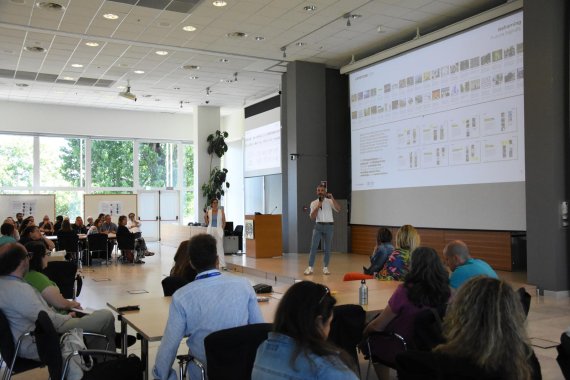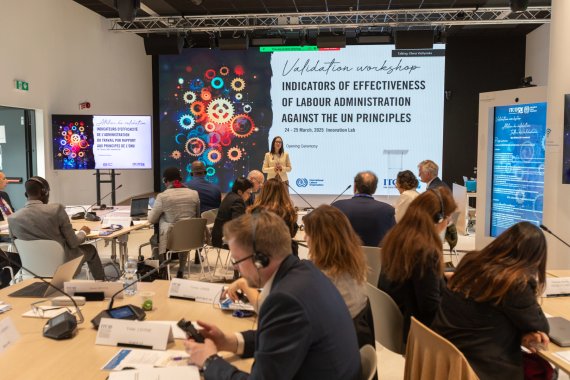Lifelong Learning
Lifelong Learning
Questions and feedback from readers about the ITCILO's e-learning and blended courses
25 October 2018
“For 15 years, I have been following courses in the ITCILO and I noticed a refreshing change in the pedagogy of delivering the trainings. It opened my eyes on the need to always keep myself updated and seek new knowledge. How did you move from the model of binge education to introducing spaced learning and pushing people to continuously learn?”
— Anuj, India
We are so glad to hear this Anuj! Your feedback is very important to us. Your observations are quite right; after years of content development and curation on ILO topics, the Centre took a strategic shift towards building an architecture that teaches people what content to use when, to make our approach to learning more sustainable and to promote the culture of longer-lasting learning experiences.
We moved from blended approaches – off and online – on the three stages of pre, during and post training, to multi-level learning approaches, micro and macro approaches. As research has proved, we – humans – don’t learn well through “binge education”. We learn by being exposed to new skills and ideas over time, with spacing and questioning in between.
In the light of this, the Centre enhanced its use of micro learning to complement its initial macro learning offer and promote an ongoing, voluntary, and self-motivated pursuit of knowledge. Lifelong learning not only enhances social inclusion, active citizenship, and personal development, but also self-sustainability, as well as competitiveness and employability.
“For many years, organizations focused on sending their officials to classroom-based training events or blended courses that would last no more than few weeks. How did the Centre support the shift towards a continuous lifelong learning culture?”
— Eduardo, Argentina
Great question Eduardo! With the booming of micro learning in the late 2010s, the Centre’s instructional content naturally fell into two categories; Micro and Macro learning.
The Centre introduced a new adaptive training service that answered the needs of its market: an à-la-carte menu to support each partner/customer in identifying their best tailor-made learning solution. No more “one size fits all” products.
The menu featured the two categories: Micro learning solutions – i.e. content that can be quickly read, viewed, or consumed and that would only take 10 minutes or less. These solutions included videos, tailor-made blogs, or a set of instructional questions that would help orient the client in their reflection. Organizations finally became aware of their officials’ new learning style; a learning attitude based on information – seeking, just-in-time consumption of this kind of material on a daily basis and all day long. A learning experience that most websites and social networks offer in massive, curated streams.
Macro learning solutions – i.e. on and off campus open courses, MOOCs, video series and instructor-led learning programs on eCampus. While we used to call these “activities,” in the context of a digital learning world they are simply “macro” in size.
A government or organization could this way send its officials to Torino for a macro activity (academy, on-campus workshop...) and complement the experience with additional pre and post on-the-shelf micro learning solutions adapted to its very specific needs.

“I saw on the Centre’s catalogue that the lifelong e-learning course has been offered for several years now. Great initiative! Why a course on this particular topic?”
— Kokeb, Ethiopia
Thank you Kokeb! Information and communication technology (ICT) in our knowledge society are changing at a breathtaking pace. These technological innovations are currently transforming the way we create, share and publish information, the ways we collaborate and share knowledge resources and the way we learn and train. The internet is a central element of the infrastructure of the information society and is increasingly becoming a global facility available to the public.
The potential impact of ICT and internet in development has been widely discussed by the United Nations System, by intergovernmental and non-governmental organizations, by civil society, the private sector and international organizations, especially in the World Summit on the Information Society. ICT and technology enhanced learning (e-learning) has opened up new potential in education and training. It is becoming ever more widespread and can make education and training available to many more people around the world and can provide multiple answers in our search to have access to lifelong learning.
At ITCILO, we launched our first session of this course in 2017 and it was a success. Many organizations and institutions started using e-learning as it seemed to be as effective as traditional learning only at a lower cost. Moreover, e-learning helped reach a wider target audience by engaging learners who have difficulty attending conventional classroom training. For these reasons, the Centre launched this online course which provides trainers with the knowledge and competencies needed to design and implement e-learning courses.
In a broader perspective, the course contributes to the general question of how e-learning and communication technology can contribute to the promotion of lifelong learning and enhance individual and organizational performance.
Disclaimer
Part of the content was retrieved from the blog post “The Disruption of Digital Learning: Ten Things We Have Learned” by Josh Bersin and adapted to the needs of this publication.
Originally published in the Future of Learning magazine.


